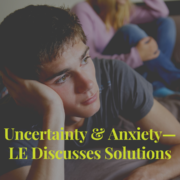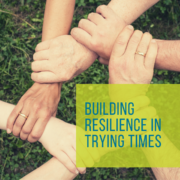Combating Toxic Stress
As the school year progresses and we near winter break and the holidays, it is easy to get caught up in the chaos of the season. Between family visits, vacations, gift lists, and holiday parties, it is easy for educators to get wrapped up in all of the things going on outside of our classrooms.
In fact, we may forget that not everyone eagerly awaits these festive times—for some, the holidays are not full of happy traditions and fond memories. Even with the interventions, resources, and extra supports that schools often provide for students in need, winter break can be a lonely, uncomfortable, and emotionally trying time for students with major stressors at home. For this reason, a little extra TLC before and after the holidays may be necessary. Schools need to provide teachers with strategies for creating and maintaining a classroom environment that helps to combat toxic stress.
ACE’s
Adverse childhood experiences, or ACE’s, are shown to result in prolonged, unhealthy levels of stress, which doctors call toxic stress. ACE’s can include alcoholism or drug abuse in the home, homelessness, domestic violence, guardians with mental health issues, divorce, etc. These negative experiences cause stress that chemically changes the brain over time, resulting in learning difficulties, issues regulating one’s emotions, and difficulty making sound decisions.
In the classroom
Experts estimate that nearly 40 million American children are at risk of developing toxic stress because of ACE’s. That staggering number means that many of our classrooms include children who are struggling to learn because of circumstances at home that are completely out of their control. To reduce the negative impact of ACE’s, schools must foster a safe, nurturing environment, one that is especially acute to the needs of students battling toxic levels of stress.
- By absorbing the mantra that teachers are educating “the whole child,” we can begin to develop an environment that seeks to help stabilize children’s lives beyond their grades and academics. Whether it be a teacher, coach, counselor, or administrator, students need to have a “safe adult” at school to talk to about their struggles. Showing an interest in that student’s life can be the first step to building that positive, safe relationship. By showing that we care about them, not just their grades, students begin to gain a sense of comfort, appreciation, and trust—which they may not be getting at home.
- Allow students to take ownership over the classroom to help build a trusting, positive rapport. By providing student choice whenever possible, like choices for novel, projects, procedures, seating, etc., teachers demonstrate that the classroom is fully inclusive—everyone’s voice and opinion deserves to be heard. These inclusive practices help students see themselves as more than their stressors and unstable home life. Collaboration puts them in the driver’s seat by providing a sense of control where they might otherwise feel pushed around or victimized.
- Set clear, predictable expectations for all children in the classroom. Students need structure, especially those whose home lives might lack structure and stability. Therefore, teachers must maintain consistency so that children know what to expect. For them, school is their safe space; it is where they know that the adults are caring, fair, trustworthy, and reliable. These are qualities that many children with toxic stress do not witness in the adults with whom they live. It’s our job to be that constant in their day-to-day lives.
- Allow options for self-regulation by modeling appropriate responses to stress. Teachers should consider making a “calm corner” or quiet space in the room designated for cool down time so that students can have a private place to gather their thoughts when emotions run high. Teachers should also consider working out a system where students can use nonverbal cues to communicate their need for a breather. The point is to create classroom procedures that allow students to express their emotions in positive and productive ways. These strategies become habits that children can then employ outside of school when stressors run high.








